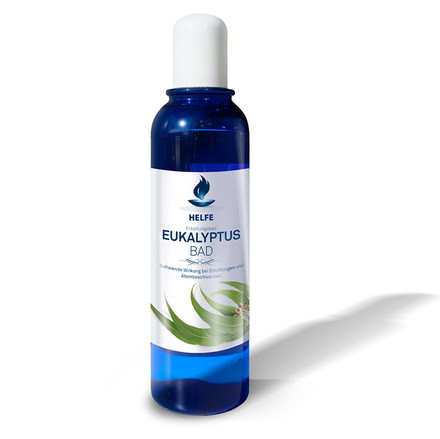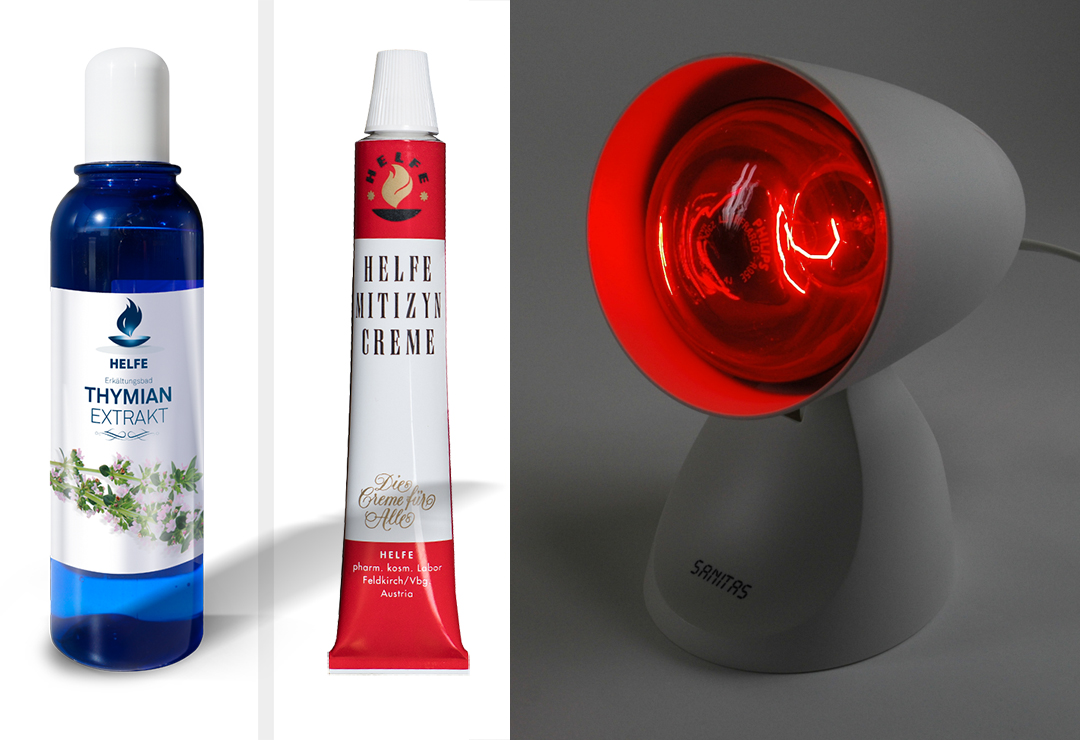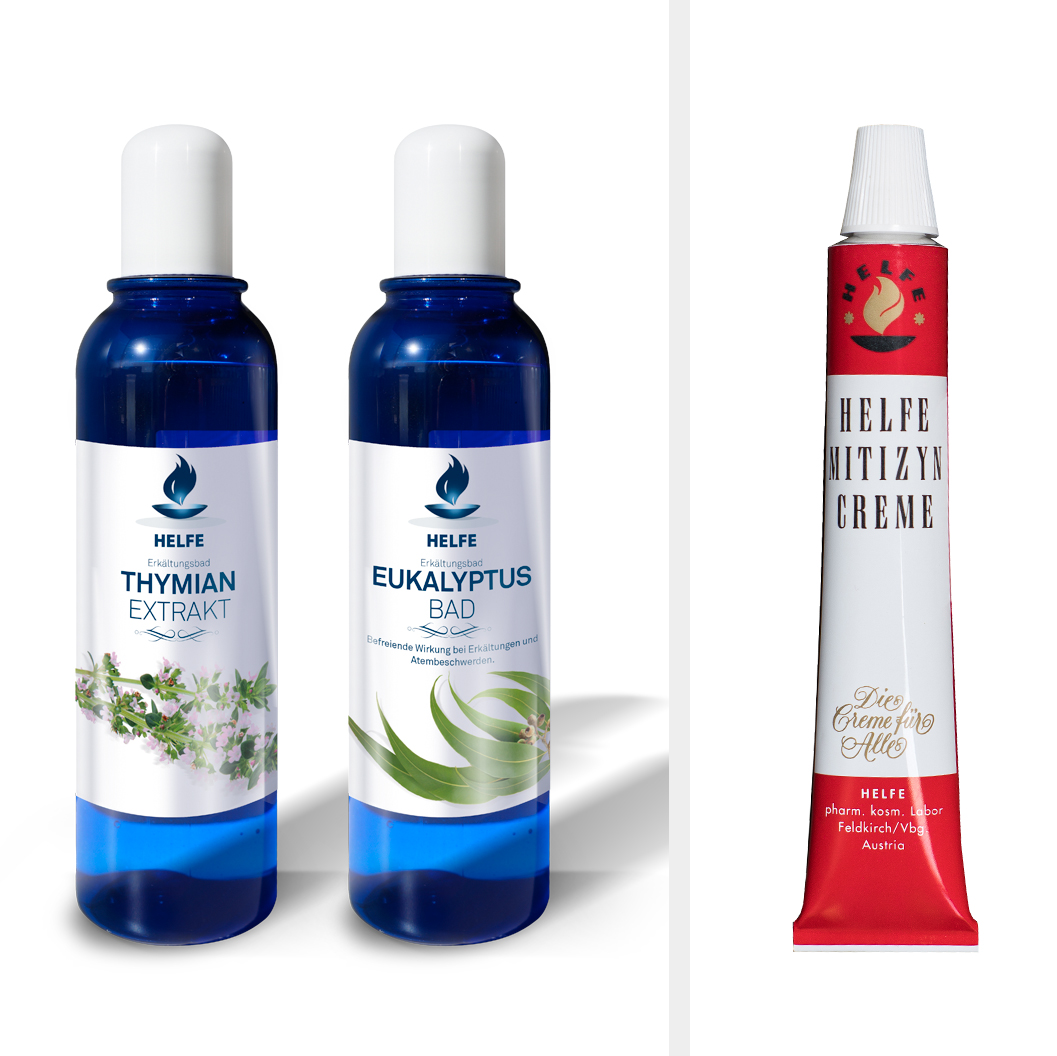Colds are particularly common during the colder seasons, because the cold weather weakens the body and the mucous membranes tend to become too dry when inside heated rooms. It is easy for common cold viruses to settle in the human body when the natural immune response is insufficient to cope. Consequently, initial symptoms such as a sore throat, coughing, a runny nose or a headache slowly begin to develop.
Warm baths are an amazing home remedy for generally keeping the body's defense fit, or for use during the initial stage of a common cold, when the first symptoms are just slightly noticeable. A strong immune system is often the best method of preventing a cold from breaking out in full force. Regularly doing sports, a balanced and vitamin-rich diet and sufficient sleep can significantly strengthen the immune system. Yet, relaxation also plays a very special role, because stress significantly weakens the body, regardless of whether it is positive, professional or emotional stress. Unexpected or sudden cold temperatures also cause sudden stress to the body, forcing it to respond with regulatory and adjustment efforts.
Warm and relaxing therapeutic baths are a great remedy. Adding bath salts, such as chamomile, lemon balm, rosemary or hay flowers to the water helps reduce stress on several levels: The warmth helps the muscles relax, while the healing powers of plants simultaneously stimulate blood circulation, thus encouraging the nutrient supply to the body’s cells. In addition, inhaling the vapors of essential oils has a calming effect. Chamomile and lemon balm are known for their soothing effect, rosemary reduces stress, and the active ingredients in hay flowers help relieve muscle pain and facilitate muscle relaxation.
At the beginning of a common cold, herbal bath additives can help relieve these symptoms. Thyme, eucalyptus, mint and pine are particularly beneficial. When the active ingredients of essential oils reach the airways via the nose, their disinfecting properties work to relieve dry, irritated and swollen mucous membranes. Thyme is an ideal choice for respiratory diseases and colds. The active ingredients of this mint family plant also have an expectorant effect. Eucalyptus is very helpful in treating bronchitis, sinusitis, coughing and a runny nose. This essential oil has a germicidal as well as an expectorant effect. Furthermore, the distinctive spicy aroma of eucalyptus and thyme oil vapors makes them very pleasant to inhale.
It is important to be aware that therapeutic baths are only helpful in strengthening the immune system and during the early stages of a cold. Once a cold has fully taken hold and the body is further weakened by a fever, taking a warm bath should be avoided, for it can be too harsh on the body. It should be noted that people suffering from asthma, high blood pressure or circulatory problems should only resort to this remedy after consultation with their physician. Furthermore, baths with certain essential oils are not suitable for babies and toddlers.
The recommended bath temperature and duration is usually specified on the package of the bath additive. If you have no water thermometer at hand, you can use clues your body gives you to figure out the right temperature. The water should be warm enough to feel pleasant. It's better to start with a lower temperature and then run hot water until the right temperature is reached. The water should be warm rather than just lukewarm for the best effects. The duration of the bath is also important. When your body signals that it has been in the water for long enough, then you should slowly and carefully step out of the tub. After bathing, the body temperature and circulation are no longer in the same condition that they were in before the bath – prepare yourself for your body needing more rest and slower movements. Ideally, you should rest lying or sitting down for approximately two hours after taking the bath.
Another great tip for when you have a runny nose or the sniffles is cleaning your nose by rinsing it with salt water. When frequent blowing has reddened the skin around the nose or made it sensitive, application of a soothing cream, such as for example Mitizyncreme, which contains skin-related fats and menthol among other things, helps.
Wellnessproducts > Alternative Therapies
Preventing colds - by bathing with essential oilsCommon cold viruses reside on surfaces for a long time and spread rapidly. They are also spread through droplet infection. This makes it rather difficult to protect yourself from the more than 200 types of viruses that can trigger colds. Almost everyone is affected by cold symptoms at least once a year. Symptoms include runny nose, headache, cough, sore throat and even fever. Anyone who is able to recognize the symptoms in time, or generally wants to strengthen their body's defense, can help themselves with warm baths and beneficial bath additives.
 Published on 09.03. by  Helfe package against cold & Beurer Sanitas SIL 06 Infrared Lamp, CHF 49.00 Helfe package against cold & Beurer Sanitas SIL 06 Infrared Lamp, CHF 49.00200 ml Helfe Thyme Extract, 40 ml Helfe Mitizyn Cream & Infrared Lamp Beurer Sanitas SIL 06, 100 Watt  Helfe Common Cold Set: Thyme, Eucalyptus & Mitizyn Cream, 2x 200 ml & 40 ml, CHF 46.00 Helfe Common Cold Set: Thyme, Eucalyptus & Mitizyn Cream, 2x 200 ml & 40 ml, CHF 46.00Herbal active ingredients against common colds: Herbal extract, bath emulsion & traditional mitizyn cream |
- FREE DELIVERY (ECONOMY)
- Safe shopping: Payment with invoice, credit card, Paypal or Postfinance
- Warehouse in Switzerland (Widnau SG)

